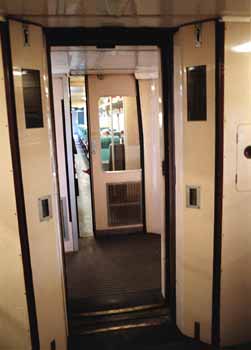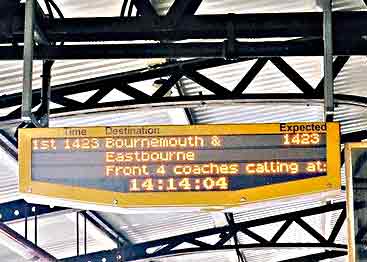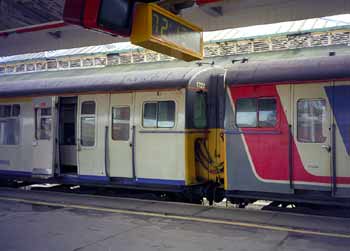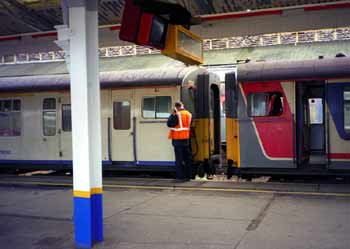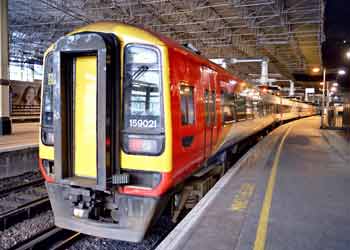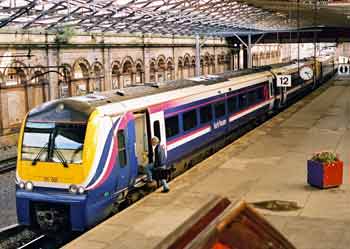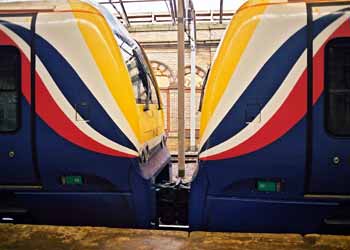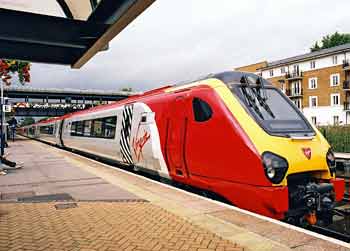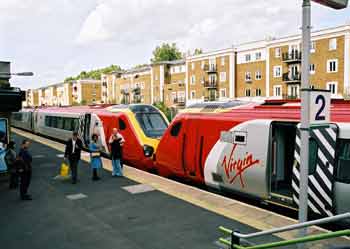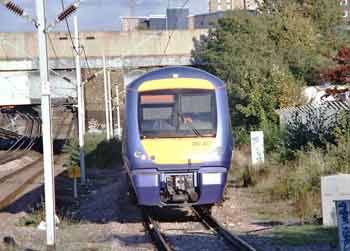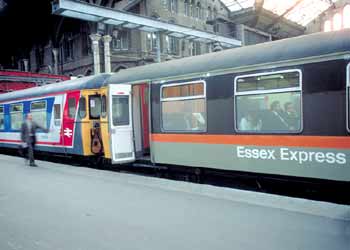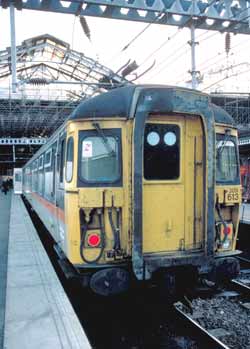Passengers like and WANT the ability to walk through ALL the carriages on their trains.
Unfortunately not all train operators appreciate this (or, dare I say, even care that this is a passenger-friendly feature) even though there are distinct commercial benefits to them too.
There are many advantages from using 'walk-through' trains, including:-
- The ability to walk through the entire length of a train helps ‘balance' the passenger load as passengers in crowded carriages can walk through to carriages which are less crowded - and possibly have some empty seats.
- Passengers who wish to travel in the mobile-phone free ‘quiet' carriage (or vice versa) are able to relocate along the train (if there is such a carriage on the train).
- The ability to walk through the entire length of a train means that passengers can choose to arrive at their destination in the part of the train which will be nearest to the ‘correct' part of the station platform for the exit.
- The ability to walk through the entire train can be financially advantageous to the train operating company as it allows both the refreshment trolley and a ticket inspector to service the complete train.
- Some train designs feature full width inter-carriage connections; as well as providing 'walk-through' features by eliminating the carriage 'ends' the extra space increases the trains' overall passenger capacity.
There is an extra significance to the 'walk-through' feature when the train is formed of the 'multiple-unit' type of train. This is because an unfortunate passenger un-friendly feature of some 'multiple-units' trains
is that whilst they are usually designed to allow passengers to freely walk from one carriage to another within the individual unit the train ends do not allow passengers to pass between the units when
two or more are operating as one train.
- On trains which will divide en-route (see below for explanation) the passengers in the 'wrong' unit risk going to the wrong destination - or at a station en route will have to jump out of the train and run along the platform to be able to rejoin it in the correct unit for their destination.
- For trains which offer buffet facilities then without the ability to walk from unit to unit then only passengers travelling within the unit with the buffet counter will be able to reach the buffet. Passengers in the other parts of the train will not be served. The alternative option would be to offer multiple buffet facilities with each serving just that individual unit (ie: a small portion of the entire train) - but surely the extra staffing costs would weigh against this?
Some Trains 'Divide' En Route And Serve Multiple Destinations
On many busy railway routes it is usual for several smaller 'multiple-unit' trains to be joined together so that they effectively become one long entity. This is more economic for the train operators because it allows them to balance train lengths according to passenger demand and availability of the individual train 'units'; and on sections of track which feature a high number of trains it increases passenger capacity because the principal constraint to passenger capacity is the number of trains that can travel along a section of track (ie: on a very busy route the signalling systems may allow a train every two minutes and a 12 carriage train can carry more passengers than a 4 carriage train).
Sometimes however these 'several unit' multiple-unit trains are reformed at intermediate stations, although it is usually complete train units which are added / removed - and not individual carriages.
Usually trains are split in this way because it allows the provision of through services to several routes where the traffic levels do not justify the longer trains needed on busier sections of track. On the return journey the individual train units will re-couple with similar train units from the other destination(s) to form a longer train again. Given a choice most passengers prefer this arrangement to the alternative of using shorter shuttle trains to serve the quieter routes with passengers having to change trains to continue their journey. This is because it saves them the hassle involved in making their connection - especially as the connecting train is frequently on a different platform which to reach will involve them in a (hopefully short) walk including having to negotiate steps (and / or ramps) to cross the railway tracks via a footbridge / underpass.
Naturally where trains are reformed en route it is important that passengers travel in the 'correct' carriages - otherwise they risk arriving at the 'wrong' destination.
However, passengers do not always join the train at the 'correct' carriages - for instance when they only just arrive on the platform in time and must either board the train at the nearest doorway or miss the train completely. Also some passengers prefer to board the train first and only then walk through it to where they need to be.
Ideally the above two scenarios should not present any problem but they will if the train is composed of units of the type that features ends which prevent passengers from being able to walk through the entire train's length, irrespective of whether it is 4, 8, or 12 carriages long.
Incredibly whilst the "walk-through" feature is something that passengers expressly do want at least one London based train operator has actually tried to justify denying passengers this facility by saying that they do not want passengers to be able to walk through the entire train because they would then walk to the 'correct' carriage that will be near the station platform exit for their destination (or the front of the train for the London terminal station) and therefore the rest of the train would be emptier.
Apart from the self-inflicted issues such as extra costs involved in duplication of on-train catering facilities (if provided) and impossibility for a ticket inspector to service the complete train, this train operator seems to have forgotten that they are providing a service to 'customers' - and in a service economy it is the fee paying customer's desires that should come first and not the service provider's. (Maybe if meeting the passengers' needs is too much trouble the passengers should find it "too much trouble" to use the companies' 'products' [ie: passenger transport facilities] - the nearby roads are much improved nowadays).
